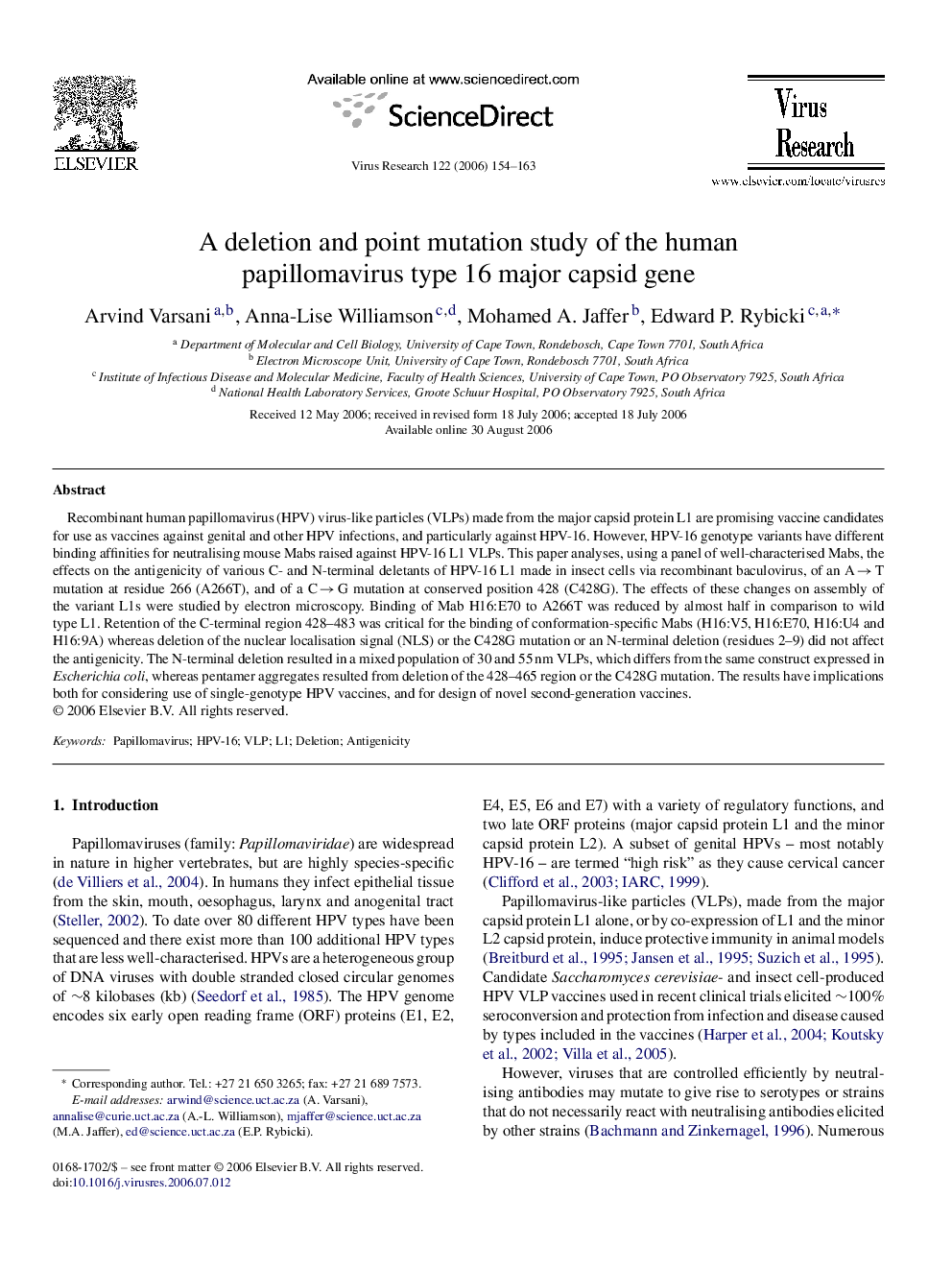| Article ID | Journal | Published Year | Pages | File Type |
|---|---|---|---|---|
| 3431178 | Virus Research | 2006 | 10 Pages |
Recombinant human papillomavirus (HPV) virus-like particles (VLPs) made from the major capsid protein L1 are promising vaccine candidates for use as vaccines against genital and other HPV infections, and particularly against HPV-16. However, HPV-16 genotype variants have different binding affinities for neutralising mouse Mabs raised against HPV-16 L1 VLPs. This paper analyses, using a panel of well-characterised Mabs, the effects on the antigenicity of various C- and N-terminal deletants of HPV-16 L1 made in insect cells via recombinant baculovirus, of an A → T mutation at residue 266 (A266T), and of a C → G mutation at conserved position 428 (C428G). The effects of these changes on assembly of the variant L1s were studied by electron microscopy. Binding of Mab H16:E70 to A266T was reduced by almost half in comparison to wild type L1. Retention of the C-terminal region 428–483 was critical for the binding of conformation-specific Mabs (H16:V5, H16:E70, H16:U4 and H16:9A) whereas deletion of the nuclear localisation signal (NLS) or the C428G mutation or an N-terminal deletion (residues 2–9) did not affect the antigenicity. The N-terminal deletion resulted in a mixed population of 30 and 55 nm VLPs, which differs from the same construct expressed in Escherichia coli, whereas pentamer aggregates resulted from deletion of the 428–465 region or the C428G mutation. The results have implications both for considering use of single-genotype HPV vaccines, and for design of novel second-generation vaccines.
